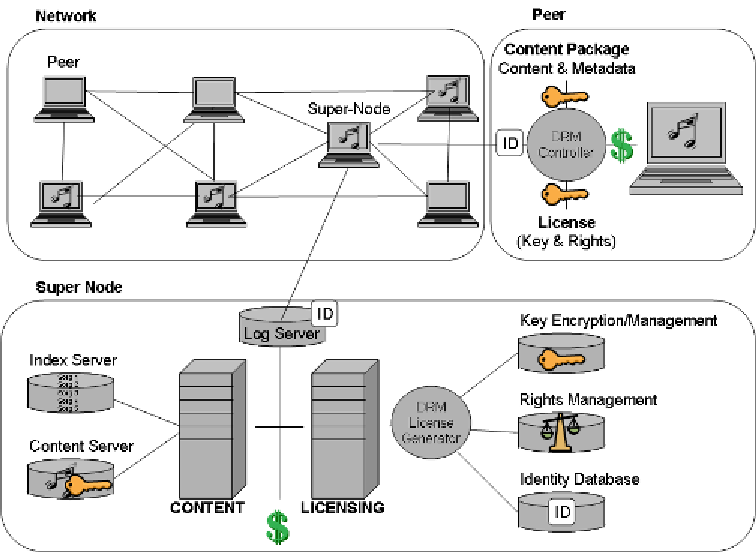Information Technology Reference
In-Depth Information
Figure 4. Digital music distribution framework
for those super nodes with their “centralized server
functions” are increasing security and performance,
both weaknesses of pure P2P networks. By inte-
grating DRM into a P2P system, this enables to
reduce performance issues such as fault tolerance
as they integrate intelligent routing and caching or
automatically mirrors popular data. It should also
reduce the free-riding problem by integrating reward
systems, asking users for their identification (log
server) or possible review of peer recommenda-
tions. Parameswaran, Susarla, and Whinston (2001)
have shown that an internal currency system can
effectively privatize a public good by compensating
contributors with credits toward network content and
services. Finally, the integration of a DRM into a
P2P enables also to solve many other security issues
such as denial of service attacks, access control or
usage tracking and overall piracy.
conclusIon
Despite huge latent demand from the consumer
side, content providers have not been able to
significantly extract value out of the distribution
of digital music. Today, most content providers
are using the client-server model to offer digital
music. However, this chapter has outlined how
P2P networks provide some advantages over the
client-server model in terms of cost of owner-
ship and scalability. Performance and security
are the major weaknesses. But, by integrating
into a P2P systems DRM, it enables to overcome
these weaknesses. Therefore, this framwork gives
content providers the secure, legal and cost-effec-
tive digital distribution channel they have been
searching for.

Search WWH ::

Custom Search